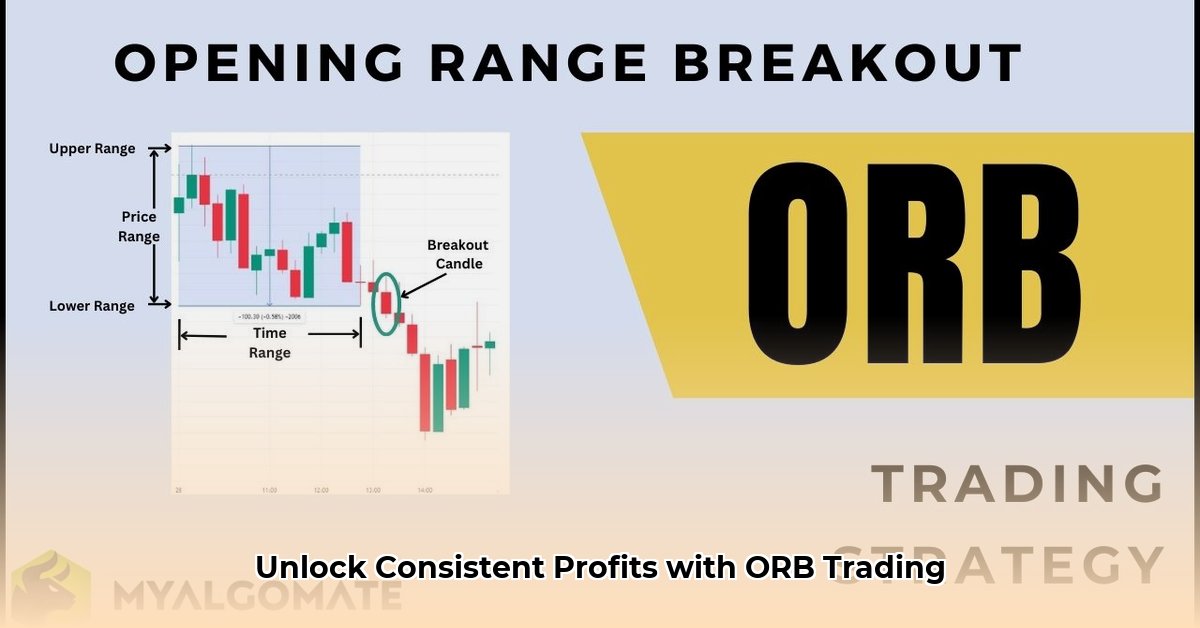
Understanding the Opening Range Breakout (ORB) Strategy
The Opening Range Breakout (ORB) strategy is a popular trading technique that leverages the price volatility often observed at the start of a trading session. The core principle is simple: identify the initial price range, wait for a decisive breakout, and then enter a trade based on the direction of the breakout. However, successful ORB trading requires more than just understanding the basics; it demands careful planning, disciplined execution, and robust risk management. This guide will equip you with the knowledge and tools to navigate the complexities of ORB trading and improve your chances of consistent profitability.
Defining Your Range and Entry/Exit Points
The foundation of any ORB strategy lies in accurately defining the opening range and executing precise entry and exit points. This involves several critical steps:
Choose Your Timeframe: Selecting the appropriate timeframe is crucial. Shorter timeframes (e.g., 5 minutes) offer more opportunities but are noisier, while longer timeframes (e.g., 30 minutes) offer fewer opportunities but filter out some of the random price fluctuations. Optimal timeframe selection often depends on the asset being traded and your specific risk tolerance.
Identify the Opening Range: Once you've chosen your timeframe, meticulously note the highest and lowest prices within that period. This defines your opening range. Two common methods for defining this range are: a) the two-candle approach where you identify the high and low of the first two candles; and b) the time-based approach where you use the highest and lowest prices within a specified time period.
Await the Breakout: Patience is paramount. Wait for a decisive breakout—a significant price movement beyond the high or low of your defined range. A minor price fluctuation does not constitute a true breakout; aim for a clear and sustained movement.
Set Your Stop-Loss: Risk management is non-negotiable. For long positions, place your stop-loss order just below the low of the opening range; for short positions, place it just above the high. This approach limits potential losses to the size of the initial range.
Determine Your Profit Target: Before entering any trade, predefine your profit target. Many traders utilize a risk-reward ratio (e.g., 1:1, 1:2, or even 1:3) to manage risk and maximize potential gains.
Manage Your Trade: Continuously monitor your trade, making adjustments to your stop-loss if necessary to protect profits. Take profits when you hit your pre-determined target. A dynamic approach can allow you to capitalise on larger trends while keeping your losses contained.
Optimizing Your ORB Strategy: Advanced Techniques
While the basic steps are straightforward, several enhancements can further refine your ORB strategy and increase your chances of success. These include:
Pre-Market Analysis: Reviewing pre-market activity can provide valuable insights into potential daily trends, helping you select stocks with a higher probability of a significant opening range breakout.
Technical Indicators: Incorporating technical indicators, such as moving averages or volume analysis, can serve as confirmation signals to increase confidence in your trade entries. These indicators can help identify false breakouts before they impact your trading capital.
Multiple Timeframe Analysis: Validating breakouts across multiple timeframes (e.g., confirming a 15-minute breakout on the hourly chart) strengthens confidence and reduces the influence of market noise, assisting in your ability to filter out poor trading opportunities.
Mitigating the Risks: A Prudent Approach to Risk Management
Successfully navigating the ORB strategy requires a sophisticated understanding of risk management techniques. The following points highlight key areas to consider:
False Breakouts: Not every breakout is a genuine signal. Many are false breakouts which can lead to considerable losses. Careful analysis, incorporating metrics such as volume, as well as multi-timeframe analysis, is critical to distinguish genuine breakouts from false ones.
Leverage: Employing leverage (trading on margin) magnifies both profits and losses. Use leverage cautiously and only when you have a thorough understanding of its implications.
Over-Optimization: Over-optimizing your strategy during backtesting can lead to unrealistic expectations in live trading. Always test your strategy against diverse datasets, ensuring that its performance is both robust and consistent.
Strict Risk Management Plan: Adhere to a strict plan, always clearly defining your stop-loss order before entering a trade and adhering to predetermined position sizes. Never trade more than you are willing to lose.
Weighing the Pros and Cons: A Balanced Perspective
The ORB trading strategy offers compelling advantages, but it also presents challenges:
| Pros | Cons |
|---|---|
| Clear entry and exit points | High potential for false breakouts |
| Relatively simple to understand and use | Requires discipline and patience |
| Potential for high win rates | Success heavily dependent on market conditions |
| Adaptable to different timeframes and assets | Susceptible to sudden market reversals (whipsaws) |
Conclusion: Your Path to ORB Mastery
Mastering the ORB trading strategy is an ongoing process that demands continuous learning, adaptation, and disciplined risk management. By employing the strategies and techniques outlined in this guide, you can significantly improve your chances of achieving consistent profitability while mitigating potential losses. Remember that ongoing research and market awareness are crucial for long-term success in any trading strategy. Begin with a demo account to test your strategies and build your confidence before trading with real capital.